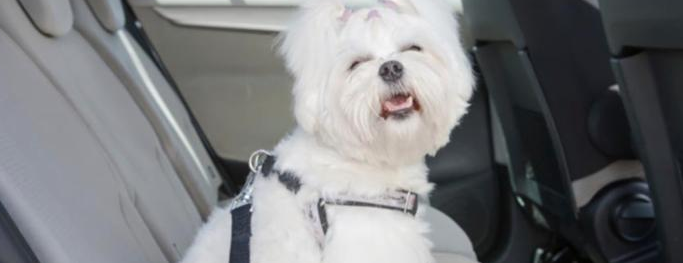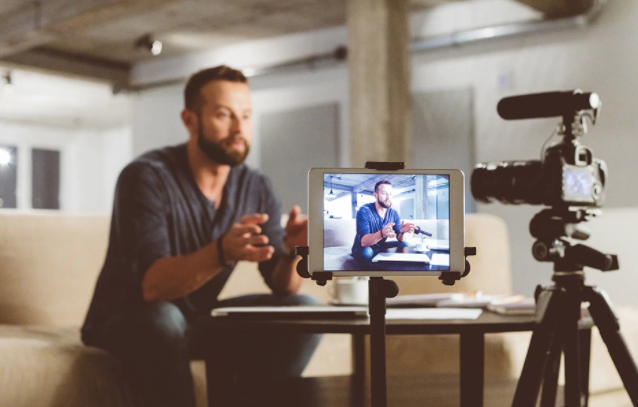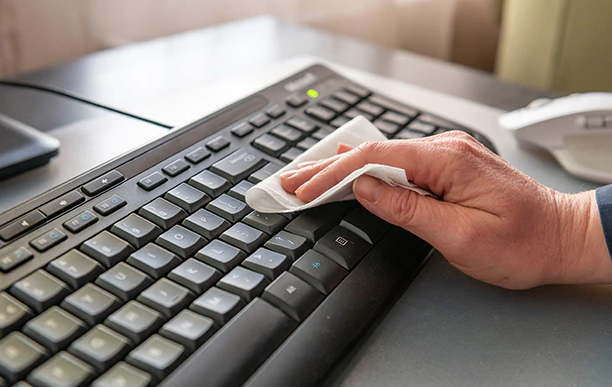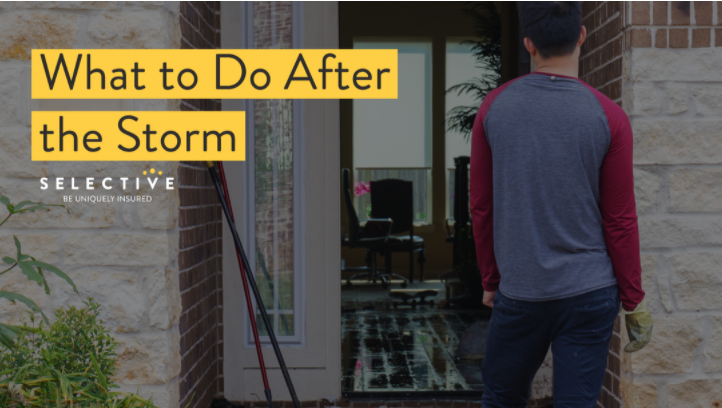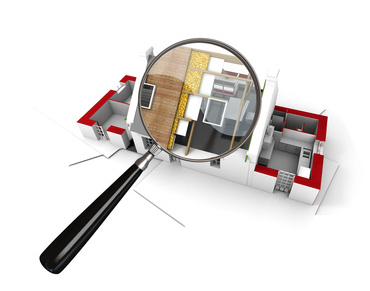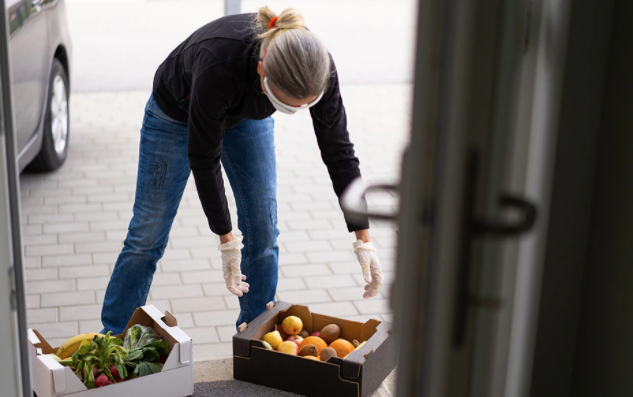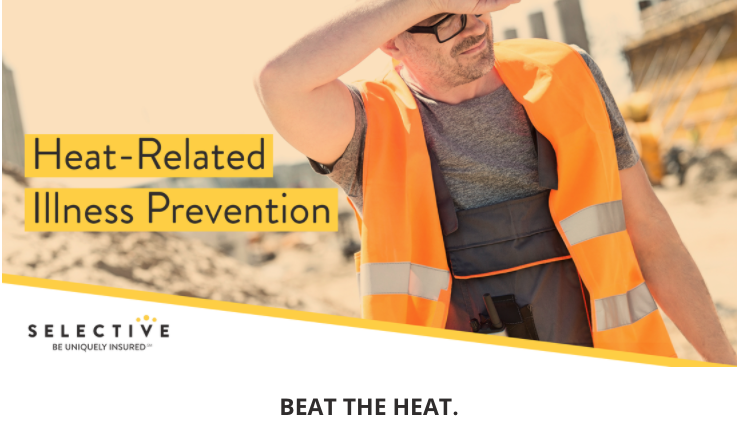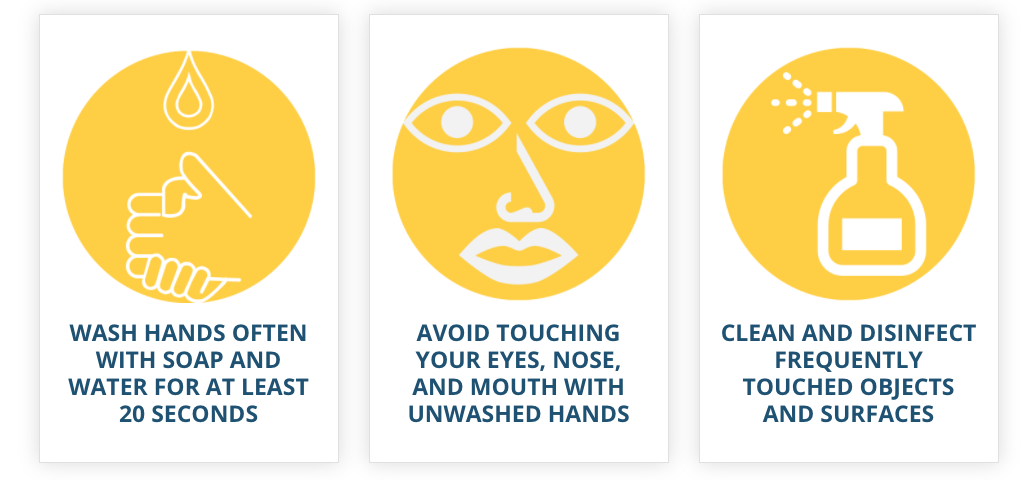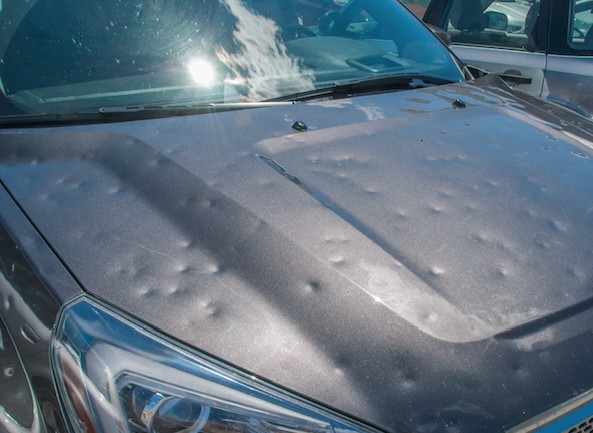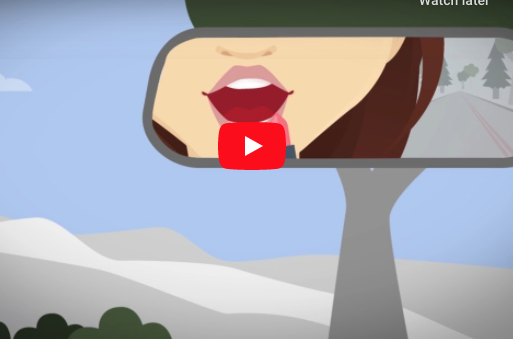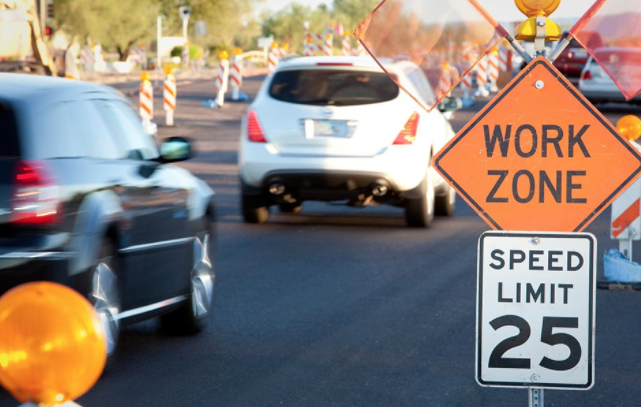What’s Your Accident Risk?
We all want to be safer drivers, but it can be difficult to improve something if you don’t have a way to measure it. Knowing your Accident Risk Level is a great first step to improving your safety behind the wheel.

We all want to be safer drivers, but it can be difficult to improve something if you don’t have a way to measure it. Knowing your Accident Risk Level is a great first step to improving your safety behind the wheel.
This quiz can help you learn what your Accident Risk Level is and areas where you can improve your driving habits.
The 5 Biggest Financial Threats to Your Small Business

Remember, no household is free from fire risk. And risks will change over time. It’s a good idea to take this assessment periodically to identify any changes.
Running a business is about balance. You have to balance your weaknesses with greater strengths. You have to balance your team with talented candidates in many different disciplines. You have to balance threats with opportunities or at least proactive measures to reduce those threats.
Threats to your business can come in many forms, from conceptual failures to real physical consequences. Some of the most dangerous threats are financial threats, which can escalate your costs, stifle your revenue growth, or in some other way compromise your profitability.
As you grow and develop your business, be sure to avoid these five major financial threats.
1. Losing a Major Client
Once you get your business up and running, you’ll probably have a handful of major clients or a major segment of your audience that you rely on for the majority of your revenue. The Pareto principle applies here for most businesses—approximately 80% of your business (or revenue) will come from 20% of your customers. Losing the bulk of that 20% of your customer base could be devastating for your revenue, leaving you with all the expenses of your original model without the income to offset them. Depending on the size of your business and the contingencies you have in place, it could spell disaster for your company in a matter of months.
The solution: The easiest way to prevent such a potential disaster is to strategically build your customer base. If you have one major client that provides the bulk of your revenue, try to find another that can balance them out, or build a backup of several dozen smaller clients so you aren’t as dependent. Similarly, you can expand your target demographics so you aren’t dependent on sales from one niche market. Either way, make sure you have formally drawn-up contingency plans that allow you to either drastically cut expenses or change strategies should your revenue suddenly diminish.
2. Overspending
It’s easy to overspend, especially when you’re excited about developing your business, but spending too much too quickly could wind up devastating your bottom line. The two main culprits here are marketing and hiring. On the marketing front, companies tend to overestimate the impact of their marketing campaign without grounding the numbers in research. As a result, they’ll throw thousands of dollars into a campaign they know nothing about, and might be forced to leave before they see any real results. On the hiring front, companies might hire a full team of full-time workers, anticipating increased demand, only to find their revenue growing far more slowly than expected. Read Full Article
14 Tips to Prepare Your Home for Fall
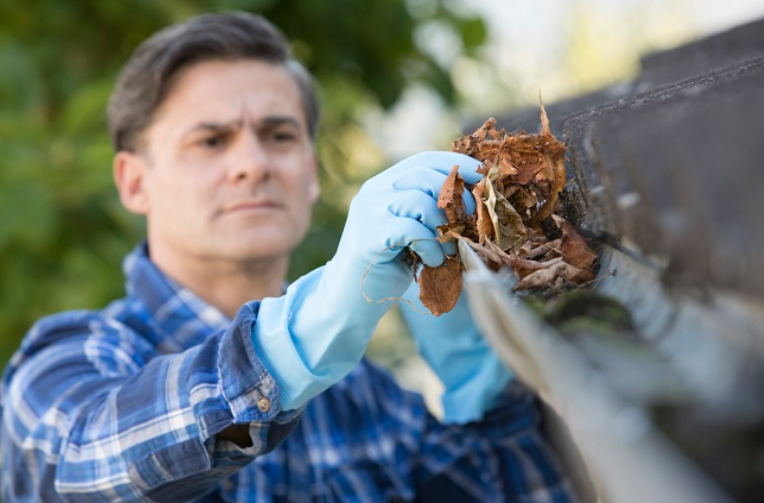
Danielle Gunraj
I love fall, especially early fall. Maybe it’s because the sweltering heat and the humidity of the New England summer dissipate and the weather transforms into crisp, clean breezes and cool nights. Maybe it’s because the leaves change from vibrant greens to jewel-toned reds, oranges, yellows and purples. As the author and philosopher Albert Camus describes it, the fall is “when every leaf is a flower.” Or maybe it’s because I take joy in knowing that school children have to wake up just as early as I do once again.
Whatever the reason, I’m really looking forward to it, even if it means that I’ll have to tackle some house and yard maintenance in the coming weeks. Here are my tips for getting your home into top shape this fall.
OUTDOOR PREP
1. Roof
Although you might want to wait until the majority of your leaves have fallen before you clean your gutters, clogged gutters can quickly lead to a watery mess, so it’s best to get started on this task sooner rather than later.
In addition to removing leaves and other debris, check for an accumulation of granules. This could indicate that your roof is losing its coating, so if you do notice a buildup, contact a roofing specialist. Once your gutters are clean, consider installing gutter guards to reduce the likelihood of a clog in the future.
And don’t forget to check your downspouts for clogs. One way to do this is to guide a plumber’s snake into the downspout to loosen the debris. It’s also a good idea to add downspouts extensions to direct the flow of water away from your home and foundation.
3. Siding
Be sure to check your siding for any cracks or gaps. With the weather cooling down, small animals might try to make their way into your home for shelter and warmth. Repair smaller holes with caulk and patch larger holes with new siding material. Also, touch up your exterior paint as needed. Not only will this increase your home’s curb appeal, but it will also help to shield your home from the elements.
4. Landscaping & Gardening
Have your tree branches trimmed, particularly those that are damaged, that are too close to your roof or power lines or that overhang your driveway. Cool weather is often accompanied by strong winds, and the last thing you need is for a tree to come crashing down on your car.
Once the leaves begin to fall, stay on top of raking them. You might be tempted to let them pile up, but there are a couple of reasons to avoid this.
- Your Neighbors. Nothing annoys me more than my neighbor’s leaves blowing into my clean yard.
- Your Yard’s Health. The more the leaves pile up and begin to break down, the more difficult they’ll be to clear away. If it snows before you’ve had a chance to rid your yard of them, they’re likely to stay on your lawn all winter, where they’ll block sunlight and encourage the growth of mold and fungus on your lawn. If this happens, don’t be surprised if you have to reseed next spring.
After you’ve cleaned up the majority of the leaves, apply fertilizer to your lawn to help prevent winter damage and so that it revives quickly next spring. Read Full Article
Distracted Driving: It’s Not Just Your Cellphone
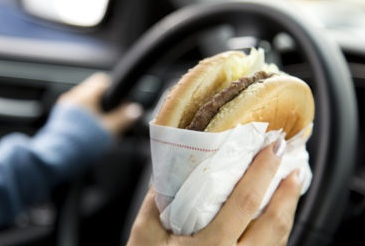
Distracted driving has been a matter of concern ever since the first cars rolled off the assembly line. In the early 1900s, when windshield wipers were first introduced on American cars, some worried that they would lull drivers into a daze. In the 1930s, state legislators unsuccessfully attempted to restrict the installation of car radios on the grounds that they could distract drivers and lead to crashes.
Today, with text messages, social media notifications, and talking GPS apps, it’s no surprise that mobile devices have become synonymous with distracted driving. But cell phones are only one of the many contributors to distracted driving. In fact, a study by the Insurance Institute for Highway Safety (IIHS) and Virginia Tech Transportation Institute (VTTI) found that talking on a cell phone is only the second most time-consuming distraction for drivers.
The study examined how using a cellphone while driving affected near-crash and crash risk, as well as what other distracting behaviors drivers engage in. The researchers found that although drivers spend around 7 percent of their time behind the wheel talking on a cellphone, the most time-consuming distraction for drivers was interacting with a passenger, which took up 12 percent of drivers’ time behind the wheel.
Here are the nine most common distractions for drivers as reported by the IIHS:
What Can You Do to Prevent Distracted Driving?
Some of these distractions can be difficult to avoid. After all, it’s not like someone is going to go on a four-hour road trip and not talk to their passengers because they could be a distraction. Instead, in situations such as this, it’s helpful to find ways to mitigate the impact of distractions.
- Eat first. One of the safest (and most affordable) ways to keep yourself from becoming a distracted driver is to manage non-driving tasks before you get on the road. Eating, drinking, programming your GPS, or assisting passengers can all be made safer if you perform these activities while parked.
- Let passengers help. Passengers can be distracting, which is one of the reasons why most states have passed graduated driver licensing laws that restrict teens from having passengers in the car during their first year of driving. However, letting your passengers help with tasks that could distract you —like answering the phone or adjusting the radio —can help you remain more focused on driving.
- Avoid conflict. When driving, it’s helpful to avoid emotionally charged conversations with your passenger so you can keep your attention on the road. Read Full Article
Finding the Best House Plan for You
(Before you go swinging that hammer, we should talk)

Whether you’re trying to add a fancy new west wing to your house or tackle an entirely brand new home DIY-style, you need a building plan. Without one, your project could end up looking like a six-year-old’s popsicle stick project. Because trust us, it’s not as simple as grabbing a box of nails, some 2 x 4s, and your old man’s hammer.
But before you go and get your plumbing all twisted in knots, we’ve done some prep work for you. We’ve gathered a bunch of information about house building plans to help get you started. Let’s do this.
What Is a House Plan?
Plain and simple, a house plan is a drawing of your potential home or addition. It includes the measurements you’ll need to follow, dimensions, layouts, installation methods and techniques for the build.
Your house plan is going to be your go-to for the majority of the work you need to do, no matter the scale of the project. You stick to that, maybe some YouTube vids, and your project should end up a success.
What Is Included in a House Plan?
The ultimate purpose of a house plan is to provide a blueprint of every part of your home. According to sources, your typical house plan will include the following building necessities:
- Foundation: Footing layout, posts and beams, structural slabs, crawl space and/or basement.
- Floor: Layout of rooms, walls, doors and windows.
- Roof: Elements that make up the roof, including ridges, valleys and hips. May also include chimneys and decorative elements.
- Exterior elevation: A 2D representation of each side of the house ,including materials for walls, roof and other elements of the home.
- Building section(s): Shows adjacencies of spaces and relationship of the ground to the house and roof.
- Electrical: Location of lighting fixtures, switches and outlets. Read Full Article
Crash Test Doggies: Prevent Your Pet from Becoming a Projectile
Do you regularly put your dog in danger?
If your pet travels unrestrained in any vehicle, then the answer is “Yes.” The idea of keeping a pet safe in transit is not a new one. Indeed, the Center for Pet Safety (CPS) has undertaken crash tests to rate the effectiveness of canine travel restraints. However, the reason behind the CPS trials was not what you might suppose – to promote safe travel for pets – but to reduce human injuries.
The vehicle manufacturer Subaru sponsored the CPS study, seeing it as the next logical step in promoting passenger safety. But if you are left scratching your head and wondering what the link is between pets and people, then take a look at the report’s sobering definition of a dog-restraint failure: “When [the harness] fails in such a way that it allows the test dog to become a full projectile…”
The problem is that in the event of a crash, a dog loose in the vehicle travels forward and becomes a projectile that can injure fellow passengers or go flying through the windshield. So if the thought of your pet sailing past your ear gives you the chills, then make sure he is properly restrained while traveling. Find out more by contacting an insurance agent in your area.
Size matters
You decide to do the right thing and secure your pet, but find the wide array of pet restraints confusing. Booster seats, harnesses, carriers, and barriers leave your wondering: What is the right choice for your furry friend? Read Full Article
Do I Need Business Liability Insurance for My Small Business?

Michael Kelly
Many small business owners wonder whether or not they need business liability insurance. The quick answer is: You probably do.
A more thoughtful answer is: It depends on what type of business you run and the agreements you set with customers.
To decide if your business needs liability coverage (and again, it probably does), it helps to understand what business liability insurance covers, why most small business owners need it, and the types of circumstances under which businesses are covered.
Business Liability Insurance in a Nutshell
Business liability insurance is a broad term that most often refers to either general liability or professional liability insurance.
General liability insurance helps cover the costs associated with bodily injury or property damage claims made against a business. It can also cover the costs of claims made against a business for false advertising. Common general liability claims typically involve “slip and fall” lawsuits. For example, if during a cold winter month, a clothing store forgets to salt the entrance to their store and a customer slips on the ice, injures his back and then files a lawsuit. In a case like this, general liability insurance could help cover the cost of the claim made against the business for causing the injury by not adequately maintaining their property.
Professional liability is different from general liability insurance in that it helps cover costs resulting from the business making an error or omission in the services or goods they provided. It helps protect your business from the legal costs associated with an error in services you provide or goods you sell.
For example,
an accounting firm that makes a mistake in a client’s financial statements that ends up costing the client a lot of money. If the client sues the accounting firm, professional liability insurance can help cover the costs the accounting firm incurs to handle the claim.
Why Do I Need Business Liability Insurance?
Small businesses that sell goods and services are wise to consider buying general and professional liability insurance. Lawsuits by customers and clients against businesses are becoming increasingly common. Read Full Article
7 Things You Should Know About Insurance Deductibles
1. What exactly is an insurance deductible?
A deductible is the portion of the costs that you pay in a claim when you need to get your car repaired after an accident or your home repaired after a loss. The deductible amount will be paid by you specific to your property that’s damaged, whether it’s your car or your home, so you should always choose a deductible that you’ll be comfortable paying.
2. How does my deductible work?
The way deductibles work varies, based on whether you’re talking about auto policies or home policies.
Auto Insurance
If you’re involved in a car accident and your vehicle can be repaired, your insurance company will pay the auto body shop for the damages, minus your deductible. You’ll then pay the auto body shop your deductible amount, when your vehicle is completely repaired.
If you’re involved in an accident where your vehicle is totaled — that is, your insurer believes that the cost to repair your vehicle would be more than the value of the vehicle itself — your insurance provider will pay you the current value of your vehicle, minus your deductible.
For example, say you’re involved in a car accident and the damages are estimated to be $2,000 and you carry a $500 deductible. Your insurance company will pay the body shop $1,500, that it, the total damages minus your deductible, to repair your car. Once it’s fully repaired, you’ll then pay the body shop the $500 deductible to pick up your car.
Homeowner’s Insurance
Your insurance company will pay you directly for the damages of your loss, minus your deductible, which you will then use to pay a contractor to repair your home. For example, say that you have experienced a kitchen fire, resulting in a $50,000 loss and you carry a $1,000 deductible. Your insurance company will pay you $49,000, the total damages minus your deductible. When the $50,000 in damages are repaired, you’ll pay for them using the $49,000 from the insurance company plus $1,000 of your own funds, which represents the deductible amount. Read Full Story
The 5 Most Important Financial Decisions Entrepreneurs Face

Business owners are responsible for a number of tough decisions, from the fine tuning of an initial business plan to ultimately choosing whether or not to sell the business once it’s successful. Some of the most substantial decisions they’ll need to make over the course of their ownership are financial, which will dictate the cash flow and profitability of the company over time.
Financial decisions should not be taken lightly, and should be made only after extensive research and careful consideration. Here are five of the most important financial decisions you’ll have to face as you start your own business.
1. How are you going to structure your business?
This may seem like a straightforward question—after all, there are only a handful of options available to business owners in the United States (sole proprietorship, partnership, incorporation, limited liability company). But different business structures have different tax advantages and disadvantages, and different ways of handling liabilities. For example, a limited liability company (LLC) generally has an easier time raising capital than a sole proprietorship and is easier to sell if the business takes off. However, it requires many more formalities and more paperwork, as well as carrying greater tax complexities. Your structuring decision will significantly impact your company’s bottom line.
Once you decide on a structure, you’ll need to file all the necessary paperwork for your business in the state in which you’ll be doing business (choosing the right state for your business is also an important factor to consider). Once the formalities are complete, there may be some tax implications you’ll have to take into consideration immediately—even if it takes some time for your business to get up and running. At this point, you’ll be able to get your tax ID and start registering with tax authorities.
2. How are you going to get startup capital?
Every business needs some amount of startup capital to get things off the ground. How you choose to raise that capital is an extremely significant financial decision for your company. It will determine the speed and volume of the capital you can gather, as well as a path forward for any remaining capital you’ll need over the course of business development. It may also require you to allow other people to be involved in day-to-day business decisions as part owners of the company.
First, you can try to raise the capital yourself, by investing your personal finances and collecting investments from friends and relatives. You can also supplement this by perusing federal, state and local governmental grants and loans. There are many available, and they can be found using directories and resources like sba.gov.
Second, you can pursue private angel investors, who will be able to provide your business with both ample volumes of startup capital and some guidance on how to run a business effectively; most angel investors are previous entrepreneurs or serial investors. However, some investment deals require investors to be influencers or decision makers in the trajectory of your business, which may rob you of some of your independence as an entrepreneur.
Third, you can elect to pursue crowdfunding, a relatively new strategy that uses platforms like Kickstarter and GoFundMe to collect microdonations from a large pool of users, essentially giving you wide access to capital without the constraints of private investors.
Finally, you can pursue a private equity loan from a bank or open a line of credit to use to get the business started. However, most substantial business loans require assets to use as collateral. Read More
7 Surprising Dangers of Driving with Pets
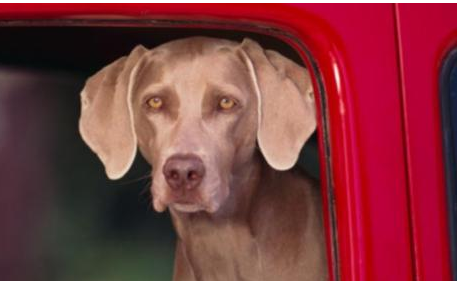
What do your dog, your cell phone, and a hamburger have in common?
Answer: They are all potentially lethal distractions when driving.
You’re a busy mom. Ferrying kids about. Dashing off to work. Not to mention finding the time to shop and walk the dog. Mind you, it helps that the dog is a good boy. He hops in the passenger seat like an angel and sits looking out the window. Your furry co-pilot. Do you buckle him up? No. It’s only a short trip.
And you’re not alone. According to a survey by TrustedChoice.com, out of a hundred people questioned, over 80% do not buckle up and use a doggy seat belt (or other methods of restraint) while traveling with their canine companions.
“So what?” you ask. Unrestrained pets are a significant cause of accidents, and they are likely to suffer serious harm themselves and cause injury to other passengers. Read More
